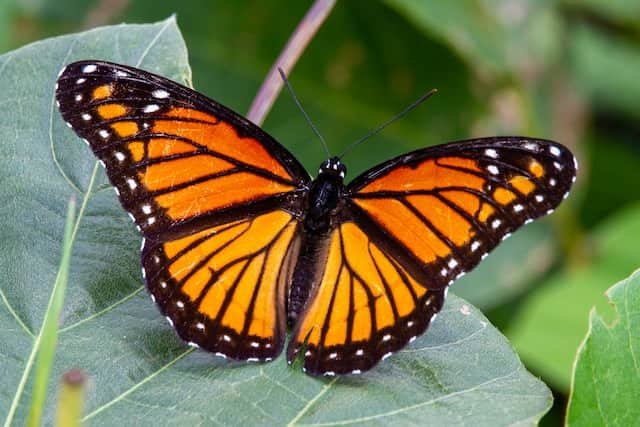Butterflies have long been admired for their delicate beauty and graceful flight. They are often associated with themes of transformation, freedom, and the wonders of nature. However, there are also many myths and misconceptions surrounding these fascinating insects.
One of the most curious questions that arise about butterflies is whether they drink blood. In this blog, we will delve into the world of butterflies to uncover the truth behind this intriguing notion and explore their unique feeding habits.
The Butterfly’s Feeding Mechanism
Before we address the myth of butterflies drinking blood, it’s crucial to understand how these insects feed. Butterflies are part of the order Lepidoptera, which also includes moths. Their feeding process is quite distinct from the way many other insects, such as mosquitoes or ticks, obtain sustenance.
Butterflies have a specialized feeding apparatus known as a proboscis. This long, straw-like structure is coiled beneath their heads when not in use. When it’s time to feed, butterflies unroll their proboscis and use it to sip nectar from flowers. This feeding behavior is why butterflies are often associated with pollination, as they inadvertently transfer pollen from one flower to another while feeding, aiding in the reproduction of plants.
The Nectar Diet of Butterflies
The primary food source for adult butterflies is nectar. Nectar is a sugary liquid produced by flowers to attract pollinators, including butterflies. Butterflies have co-evolved with flowers over millions of years, developing a mutually beneficial relationship. As butterflies feed on nectar, they inadvertently transfer pollen from one flower to another, aiding in fertilization.
Butterflies are highly selective about the flowers they visit, and their preferences can vary depending on their species. Some may be attracted to brightly colored flowers, while others prefer those with specific shapes or scents. Butterflies have evolved to be highly specialized in their nectar-feeding habits, often targeting particular plant species.
Butterflies do not drink blood; this is a misconception. Unlike some other insects, such as mosquitoes, which feed on blood to obtain the nutrients required for reproduction, butterflies have no physiological need for blood. Their dietary requirements are solely met through nectar and other sugary substances found in nature.
The Origin of the Myth
The idea of butterflies drinking blood likely stems from the misconception that all insects feed in a similar manner. People may associate butterflies with blood-feeding insects like mosquitoes because they are often seen probing flowers with their proboscis. However, the proboscis of butterflies is adapted for sipping nectar, not piercing skin or sucking blood.
Additionally, some butterfly species are attracted to sources of moisture and minerals, such as mud puddles or damp soil. This behavior is known as “puddling” or “mud-puddling.” While puddling, butterflies are not consuming blood but rather imbibing the mineral-rich water and absorbing essential nutrients like salts and amino acids. Puddling is especially common among male butterflies, as these nutrients can be transferred to females during mating.
The Truth About Puddling
To dispel the myth of butterflies drinking blood, let’s explore the phenomenon of puddling in more detail. Puddling is a behavior exhibited by various butterfly species and is often observed in tropical regions. Here’s how it works:
- Seeking Minerals: Butterflies, particularly males, are attracted to sources of moisture that contain dissolved minerals. These minerals are essential for various biological processes and can be scarce in their regular nectar diet.
- Imbibing Nutrients: When a butterfly lands near a mud puddle, damp soil, or other moisture sources, it extends its proboscis and drinks the liquid. During this process, the butterfly absorbs vital minerals, salts, and amino acids, which can be used for various physiological functions, including reproduction.
- Not Blood: It’s important to emphasize that puddling butterflies are not consuming blood but rather extracting essential nutrients from non-blood sources. There is no predatory or parasitic behavior involved in puddling.
- Reproduction: The nutrients acquired through puddling can be transferred to females during mating. This ensures that the female receives an adequate supply of essential minerals to support egg production and the development of their offspring.
Common Puddling Sites
Puddling behavior can vary depending on the butterfly species and its specific nutritional needs. Some common sites where butterflies engage in puddling include:
- Mud Puddles: Butterflies often gather around muddy areas or damp soil, which provide a readily available source of moisture and minerals.
- Riverbanks and Streams: Areas near water bodies are also popular puddling sites, as they offer a combination of moisture and minerals.
- Decaying Organic Matter: In some cases, butterflies may puddle on rotting fruits, animal dung, or other decaying organic matter, which can contain valuable nutrients.
- Sweat and Tears: Some species are attracted to human sweat and tears, likely due to the salt content. This behavior is less common but occasionally observed.
Conclusion
In conclusion, butterflies do not drink blood. This misconception likely arises from the sight of butterflies using their proboscis to feed on nectar and engage in puddling behavior to obtain essential nutrients. Butterflies are entirely harmless to humans and other animals when it comes to feeding.
Their dietary habits are a testament to the intricate relationships that have evolved between these insects and the plant world. So, the next time you see a butterfly fluttering by, rest assured that it’s not on the hunt for blood but rather seeking the sweet nectar of flowers or the minerals of a mud puddle in its quest for survival and reproduction.


